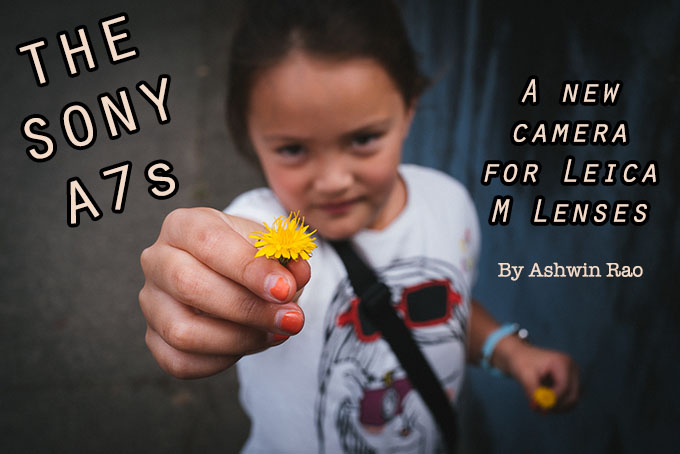
The Sony A7s: A New Camera for Leica M lenses
By Ashwin Rao – HIs flickr is HERE, his Facebook is HERE
Hello, gang. It’s Ashwin, back from a bit of a hiatus to discuss the camera du jour, Sony’s impressive A7s. The A7s has gotten quite a bit of press, in particular for it’s remarkable ISO sensitivity/performance, for it’s 4K video, and for it’s buck-the-convention 12-megapixel sensor. It’s been hotly debate, in light of the already-exceptional performance of its two siblings, the A7 and A7R, which offer different full frame sensors. I have extensively shot both bodies, and while I enjoyed the experience, I was left a bit in the lurch for entirely selfish reasons. Unfortunately, extensive shooting bore out that the A7r is really not a great option for Leica M lenses due to the critical nature of the sensor and how it plays (poorly) with M lenses, causing excessive vignetting, color casts, and detail smearing at the edges. The Sony A7 is better with regards to its capacity with M lenses (most lenses 35 mm and above do “okay” to “great” on the A7), but after shooting these 2 cameras, I came to the conclusion that perhaps Leica M lenses were best suited to be used on Leica M camera bodies, from a purely imaging standpoint. One can argue endlessly about the rangefinder (beyond the frame lines) vs SLR/mirrorless (tunnel vision) way of seeing, and there’s really no right answer there, as it’s more a matter of preference. But until recently, while the A7R and A7 were capable of using M lenses, they didn’t really make M lenses shine. And thus, I moved on, continuing to genuinely enjoy my Leica M bodies for my M lenses.
A few months ago, whispers of a new camera began, and what resulted was the Sony A7s….a low megapixel (in today’s market), high ISO monster reportedly designed for videographers ready to make use of its full frame sensor and 4K recording potential. What people did not speak so much about was whether it would handle Leica M lenses better than its siblings. Maybe it was a lack of interest, and maybe the conversation moved on, but for me, my curiosity was piqued. I wondered whether the sensor’s lower megapixel (less critical) sensor, coupled with its gapless sensor design, would allow it to handle rangefinder lenses, which notoriously bend light into difficult angles at the periphery of digital sensors. My curiosity was also piqued by the high ISO capabilities of such a camera. If the A7s could handle high ISO’s as well as was being made out, suddenly, one could use compact, relatively “slow” M lenses such as the f/2 Summicrons, f/2.5 Summarits, f/2.8 Elmarits, and f/4 Elmars in low light conditions at high shutter speeds. Further, faster M lenses, such as the f/1.4 Summiluxes and f/0.95-1 Noctilux options might allow the photographer to see into the dim light of night like never before, and the lenses remain relatively compact to top it off. Leica M and other rangefinder lenses are generally much smaller than their mirrorless (at least FF mirrorless) and SLR counterparts, and balance quite well on the A7(s/r) bodies quite well, so one could make incredibly versatile images at very low light, using a very small kit…..in theory.
To top it off, the Sony A7s was soon announced to have a “silent shutter” option, allowing the photographer to shoot with a full electronic shutter that would not announce itself whenever a photo was being taken. To me, this was one of the huge potential benefits to the Sony…Silence means that a photographer can work discretely, and the A7s, for the first time, offered this option to the photographer choosing a mirrorless body for work…For a Leica photographer-nutball such as myself, the value of discretion is part of the “rangefinder way”, and now, here was a mirrorless body that did it even better than the Leica M3 through M7, with their lovely/subtle shutter sounds….Here was a camera that could offer silence when shooting (albeit with the risk of a rolling shutter effect for fast-moving subjects)….wow, the A7s was now really grabbing my attention.
But, All of this was fine and dandy, but only, and only if M lenses would play well on the Sony….
So the early reports came in, including Steve’s own detailed, fantastic, glowing review of the camera, using mainly FE lenses…Steve was blown away by the camera’s AF performance, high ISO performance, and it’s overall handling, for a full frame camera. But the images that intrigued me most from his review, as well as those of others, was the performance of the tiny Cosina Voigtlander 15 mm Heliar lens. Many of you know that while this lens one of the widest fields of view for a rangefinder lens, it plays quite poorly with the M9 and M240, and doesn’t do well on cropped sensors in many instances, due to excessive color shifts (magenta) and vignetting, due to the physics of the optics at play and how they project light through the lens and onto most sensors…Yet, the Sony A7s was handling the CV 15 mm lens, no sweat.
So off I went to my camera store, armed with a host of Leica M lenses, ranging from a 21 mm f/3.4 Super Elmar through a 90 mm f/2 APO-Summicron. After a few preliminary shots, I took note of dramatically less vignetting and what appeared to be more uniform color through the image field (i.e. no color casts). Hmmmm, great start, I thought….
But what about smearing? One issue with using lenses 35 mm or wider at full aperture, is that many lenses start to smear details at the periphery of the imaging field. It’s a dirty little secret that Leica’s own wide angle lenses tend to do this on digital bodies, and this was one of the reasons that it took so long for Leica to introduce a digital rangefinder (and ultimately, the Leica M8 with it’s 1.3x crop sensor, designed to avoid the physics causing some of the issues mentioned). At one point, Leica’s CEO at the time mentioned that it might never be possible to produce a digital M body, but we know how that prediction turned out….
Smearing has been a major issue for me with full frame bodies such as the Sony A7r and A7, and when added to intermittent color casts and high levels of vignetting, I had previously found that files just took too much work to get things right, and I gave up. Now, sitting home at my computer with a variety of files from a variety of lenses ranging from wide to telephoto, I was not seeing any objectionable colorcasts and much improved vignetting. How about smearing, then? Well, the jury is still out, but for the most part I have been entirely pleased. Of the wide lenses in my possession, I found that the 21 mm f/3.4 Super Elmar did exhibit slight detail loss at the far edges of the image, but this was not objectionable, just more than what I had seen on the M9 and M240 bodies. The lens that continues to “misbehave” on the A7s was the Leica 28 mm f/2 Summicron ASPH. This lens gives even Leica M bodies some trouble, and in the case of the Sony A7s, it has continued to produce moderate smearing at the edges. For real world street photography, in which edge sharpness may not be important, the smearing rarely matters, but if one were shooting landscapes, he or she would notice this, so it’s I lens I have considered avoiding for those moments when edge sharpness matters (For most other moments, the 28 ‘cron works great). Beyond that, I have had no issues with edge smearing. Everything works great. My Wide Angle Tri Elmar (WATE) works perfectly at 16 mm on the A7s, though this lens’ design plays reasonably well with even the A7r. My 35 mm f/1.4 Summilux FLE, which didn’t work well on the A7 due to odd vignetting, works perfectly well on the Sony A7s.
To add to the story, I have found that the Sony A7s does a great job with colors. It presents a palette similar to that of the Sony A7 and A7r, so if you are used to the files that those cameras make, the A7s will be similar. One nice added perk is that at higher ISO, while dynamic range does start to drop off a bit (particularly past ISO 4000, though files are totally useable, in my opinion, through ISO 12,800), the color reproduction at those high ISO’s remains solid. There’s only so much you can push today’s sensor tech, in terms of dynamic range and high ISO noise and color performance, but the Sony A7s is today’s state of the art.
Ultimately, I have been thoroughly pleased with my time using Leica M lenses as my sole lens set up for the Sony A7s. Everything works well. High ISO – check! Silent shutter – check! Minimal muss and fuss with edge image quality – BIG check! Colors and skin tones. Check that as well. Handling of camera with M lenses…big HUGE check! It all seems to work well.
In summary, I have found the Sony A7s to be a great option on which to use Leica M lenses. If you have an investment in rangefinder lenses, or intend to do so, the Sony A7s is the current camera that you’d want to have on a budget. Sure the Leica M9 is fantastic, but it has high ISO limitations. The Leica M240 is great, but tends to start banding around ISO 3200. Those are fantastic options and allow one to see in the “rangefinder way”. But separating yourself from that, the Sony A7s is an incredible imaging machine. Sure, it has a lower megapixel count, but 12 MP files are plenty for the vast majority of us. The camera’s incredible ISO performance allows for the use of slower lenses, and thus more compact lenses, in low light shooting circumstances. Suddenly, your Elmars and Summicrons become relevant options for night photography, and lenses such as the Noctilux allow you to pear into the night better than your own eyes….it’s rather incredible. Creative possibilities open up, and I see new photographic horizons ahead! The Camera’s EVF is sufficient to reliably focus lenses, particularly if one uses the “Focus Magnify” option to achieve critical focus. The silent shutter allows for very discrete shooting, and for most street photography moments, it’s a perfect option (I have yet to see the Rolling shutter effect for my style of shooting) that’s silent and discrete. And year, silent shutter means no shutter shake to blur your images at that pixel level. Speaking of pixels, the camera’s lower pixel count allows for easier achievement of sharp images at slower shutter speeds, if desired, as 12 MP is much easier to hand hold than 36 megapixels in nearly any circumstance…something to consider if pixel peeping for sharp images is your thing.
The list goes on and on, but you can see that I am quite convinced that the Sony A7s is a viable option for those of you who want to use small, high performance rangefinder lenses on a mirrorless body. It’s the way to go. By the way, every image you see here was shot with the A7s and a M mount Leica lens. Now go out, test one out, and see if it satisfies you. The Sony A7s has certainly satisfied me.
All the best to you, my friends!
Ashwin (July, 2014)

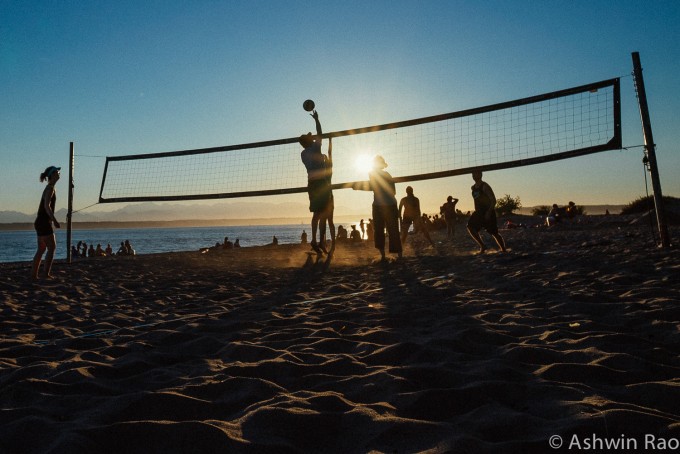
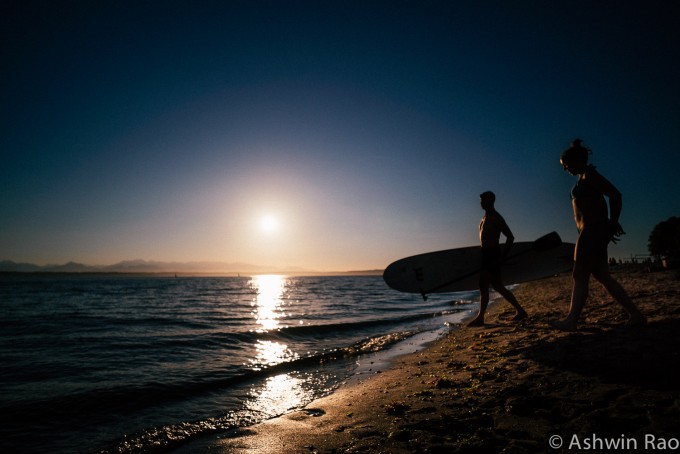
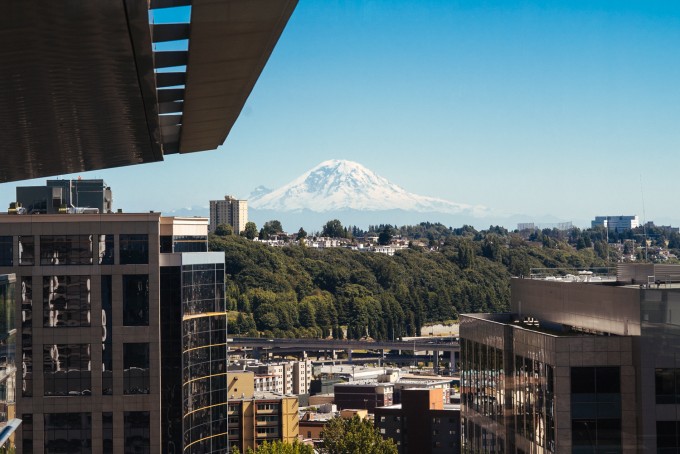
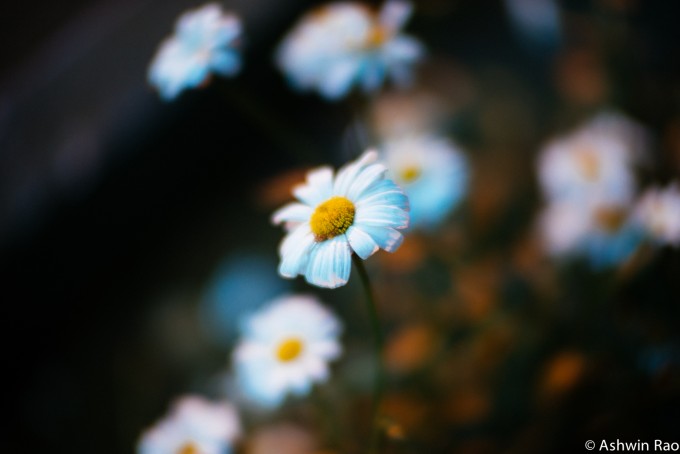
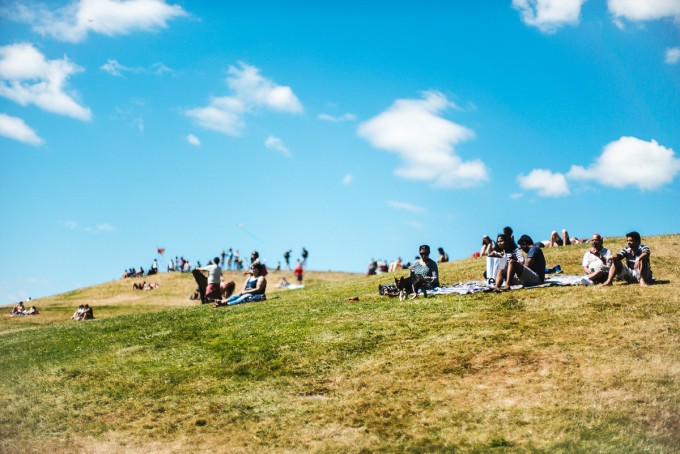
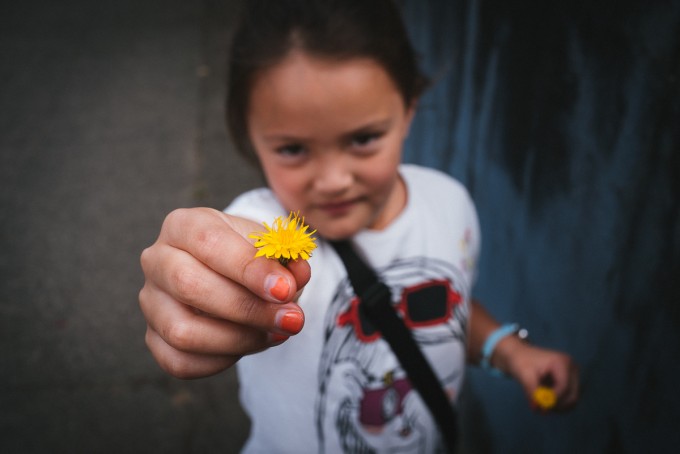
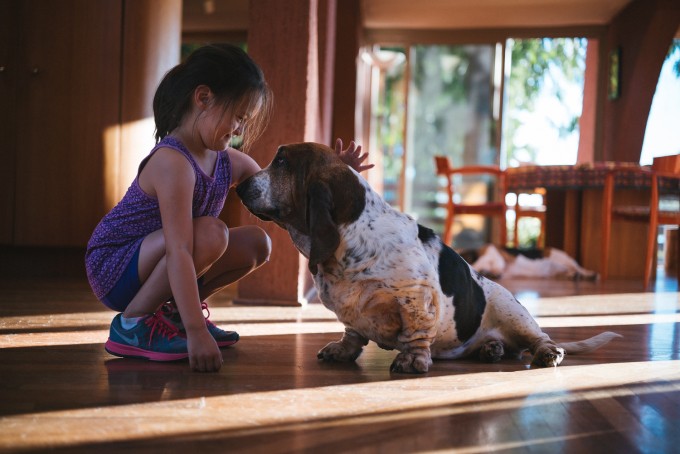
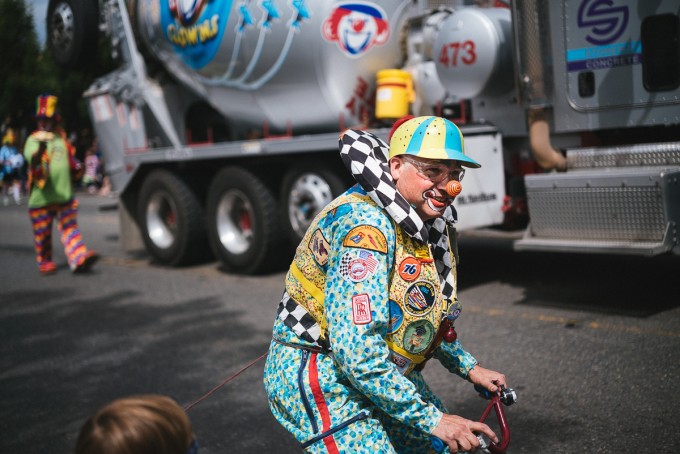
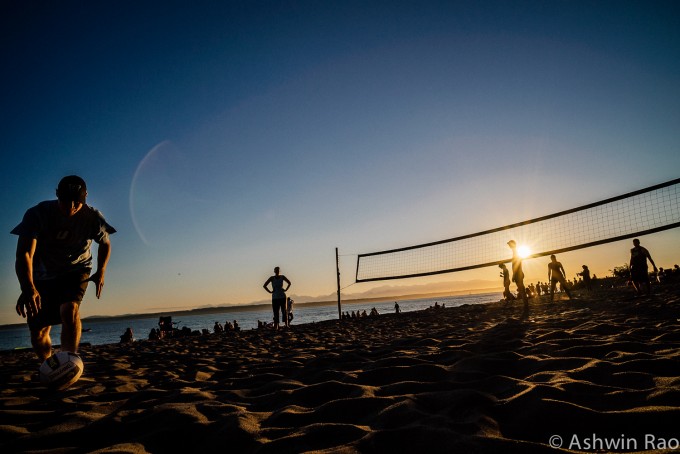
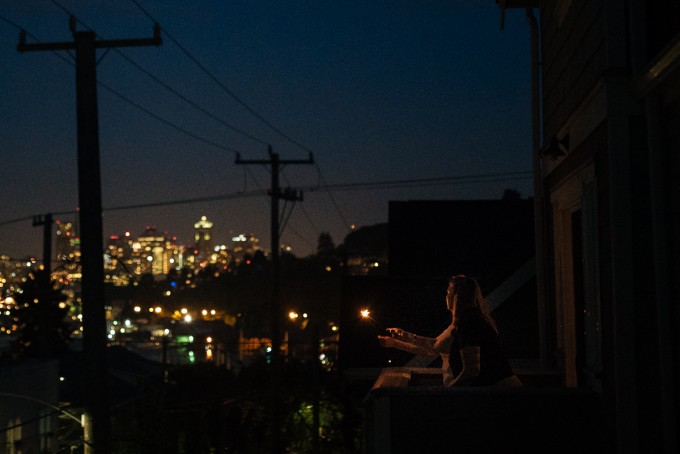
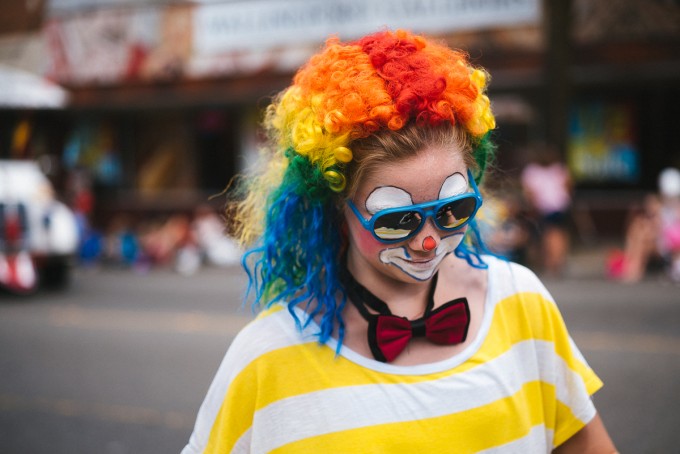

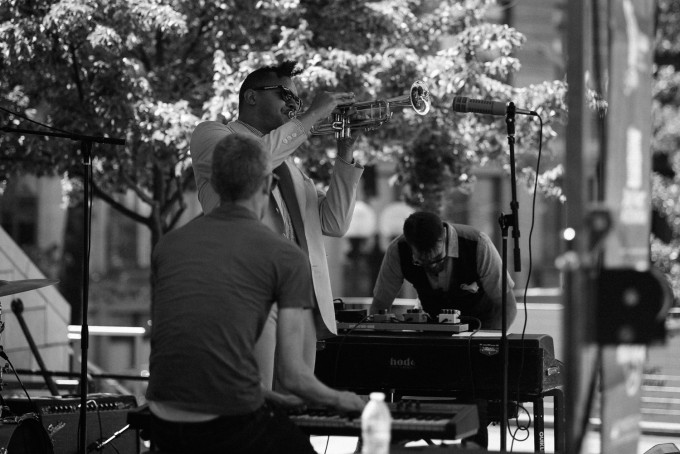
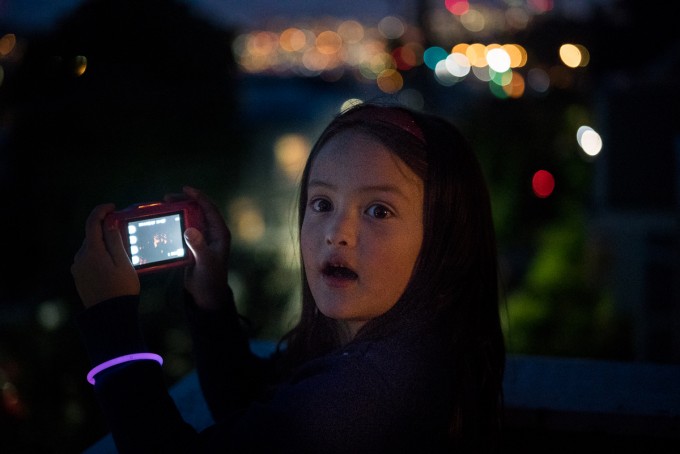
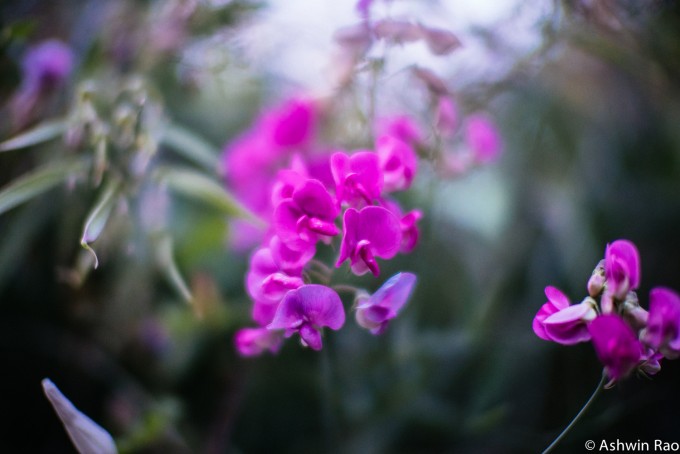
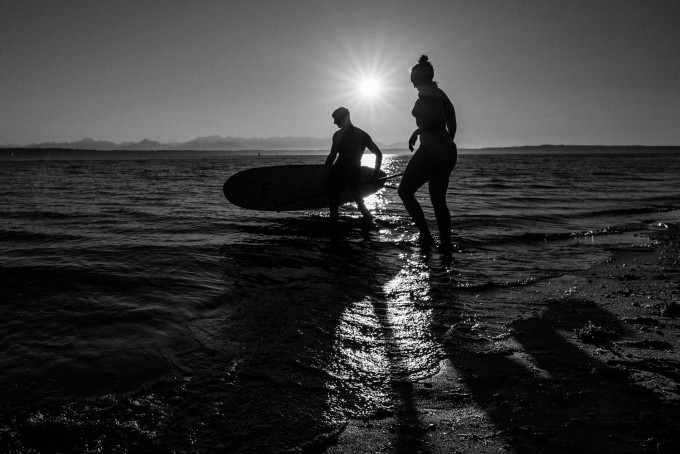
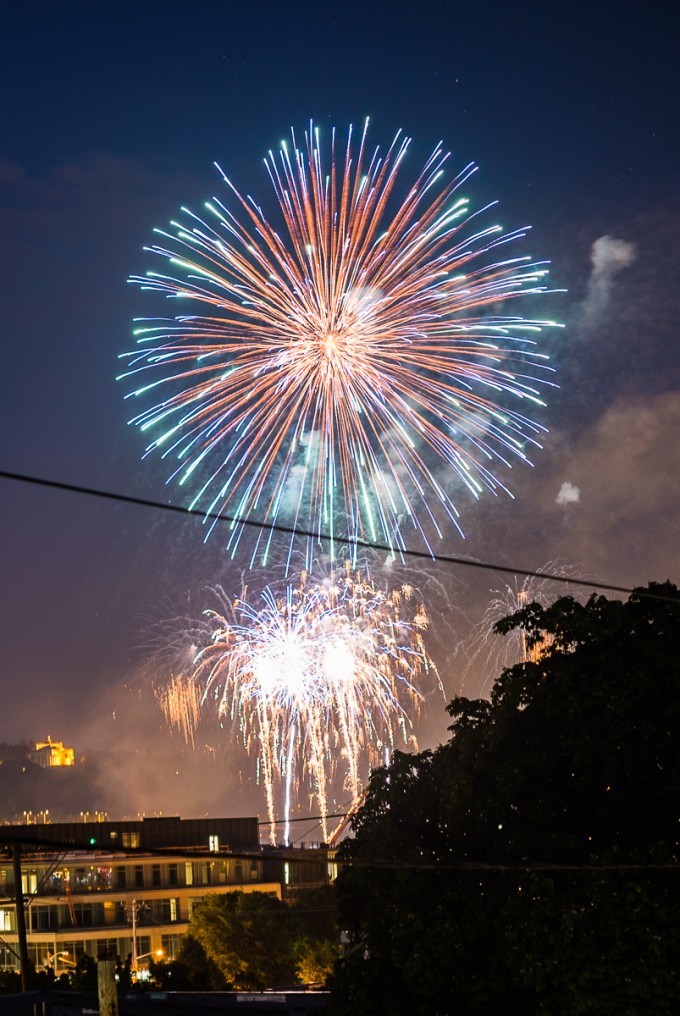

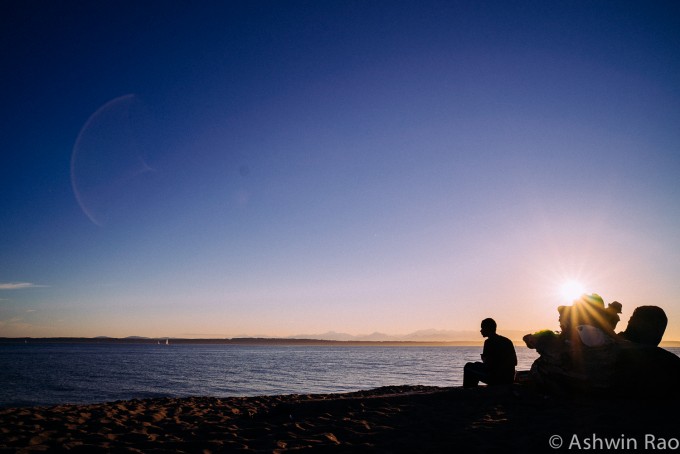

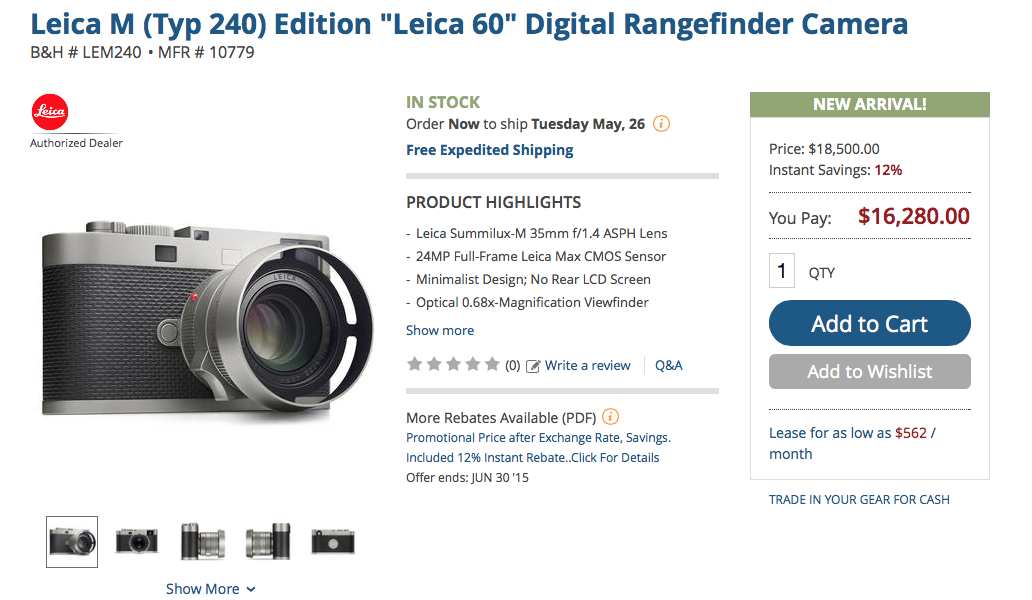
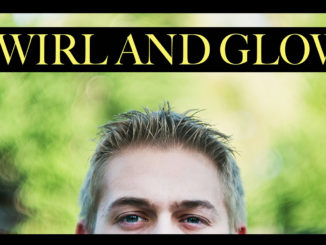

Hello
Very nice blog!
I am planning to purchase the A7II and I am already owning M mount (15mm, 28mm and 50mm) lens that I plan to use on this camera.
However, I’m a bit skeptical because of the lack of focus assist: nothing tells you whether your focus point is or not focused. It is your eye that tells you this. In low light or for fast reactivity, it can be really tricky.
What is your experience with focusing with M lenses on the A7?
I do street, landscape and portraits.
Thanks
Hi, great article. I have been considering a variable wideangle for a while for my Sony A7S. If price was not a consideration, just wondering how the Leica 16-18-21 stacks up against the recently released 16-35 Sony FE mount for usability and picture quality, thanks,
Very Nice Review.
I ‘m used to leica M9 and I love it (prefer it to leica M240…). However I have been using an A7 with leica 35 summilux FLE, 35 summicron asph and 50 summicron asph but I was also very disapointed with the files compared to M9. Is there a way to be able to downnload one of your raw file with the combo A7S and leica M lenses 35 or 50 cron or lux ? I would really appreciate if I could have one of those RAW in order to see how it deals with Lightroom before buying an A7S.
Best Reagrs.
Bristo
Hi Ashwin, When I shoot in portrait mode with the Summicron 35mm f2 with the A7S, I get strong vignetting on one side. This is when the subject is quite a bit far (say 30-40 metres)
Strange that there is no vignetting in landscape mode. I thought the lens hood might create a shade but without the hood, the vignetting exists too. (Voigtlander close focus adapter)
Did u witness this?
Hey hey, I was wondering more on the colour profiles not the white balance, there is standard, light, b&w etc, could rao or Steve help pls?
Hi, just wondering what colour profile were u on? I keep switching between standard and light but the colours just can’t come out right, 🙁
I leave mine set on Auto WB and the colors are amazing! As good or better than my previous Canon 5D MK3 and better than my current Leica M 240!
This is not my camera, just stumbled up on it. Is A7s same low build quality as A7r?
https://www.youtube.com/watch?v=Hw1NKIGZ4ps
Even M9 has more metal in body frame, not to mention X-Pro 1 which has 6 screws in lens mount thread.
Same build but I have seen that issue with Nikon, Canon, Leica, Fuji and Olympus. It’s not every camera. I have been using the hell out of my A7s, no issues. Same with the older A7 or A7r. Those who I know who own one, no problems. But all cameras have issues here and there, all of them.
Hi, sorry, did nit get to read all the comments. Leica T vs A7 I own a cron 35, a biogon 21 and a noct 50. IQ wise? I could buy the zoom on either camera for easy travel kit. What is your thought
Hi Ashwin,
Can you tell us which lens was used on each photograph ?
I’m especially intrigued about photos 4,5,11,12,15 and 18.
Thanks!
Anthony
ok, it’s the noctilux 0,95. That doesn’t surprises me
Love the beach pictures!
I wonder how the Voigtlander 12mm f5.6 will do on the A7s.
Guys, Check this out: http://dc.watch.impress.co.jp/docs/review/special/20140718_658298.html
Non retrofocus wides/ultrawides on A7s
Looks like it gets rid of the color casts compared to the A7, which is what Ashwin is reporting. I personally don’t care about any of the lenses tested. I’d like to see how the Summilux 21mm F/1.4 performs.
If one has spend a lot of money on M-lenses, he should stay with his Leica bodies! SONY don’t needs it at all, having themselves excellent glasses, incl. AF and other more actual possibilities! Why messing with old fashion M-lenses on a nice and modern SONY A7/A7r/A7s, I personally don’t care! The photographer behind the cameras. ist still the “major domos”, and not the various glasses!
Hush now
Hi Ashwin firstly I like allot of your photos with the a7s but I have to say I have been shooting the a7r with older leica lenses and a nikkor noct nothing under 35mm as I own nothing under that focal lenghth and I think I’m getting very special results on allot of shots Leica itself told a friend of mine he would not get stellar results on his FLE at all apertures? So far I’m really loving all my old lenses on the A7R I might get an A7S to compliment it thanks for your opinion
Hi Aswin,
I like photo of girl and dog above, probably nicer if they were out of shadow.
You’ve found that files are useable through iso12800, what happen beyond that ? Are we still get usable files to iso 409600? and what is the conclusion, Are the M lenses shine on A7s in everyway?
How much efforts some of us spend to find the next and a better digital camera body for M glass? How many of us are professional photographers with tight deadlines and clients insisting on digital output? How many of work all day with a computer, and thus may enjoy a non-digital workflow for the outputs of their hobby?
Digital Leica M bodies have more quirks compared to their digital competition than film Leica M bodies had in comparison to their contemporary film competition. Digital M bodies still are three times the price of the competition, but depreciate as quickly.
Prices for used M glass are high as never before and used M film bodies are cheap as never before.
Anybody get my point?
Once again Ashwin, a valuable contribution to the photo-enthusiast community. Knowing how busy you are, we should all be thankful for your efforts.
Peter.
Those pictures remind me my old pal, GF1 with PanaLeica 25mm, probably due to the same 12 megapixels counts, but of course, A7r has much better dynamic range and less noise.
Hi Ashwin.
Wonderful article, as always. I always look forward to your next post….
I read the full article, but didn’t seen to spot whether or not you actually purchased the A7s. Did you buy it, and if so, would you feel compelled to use it in place of the M240?
BTW, were you at Gasworks Park on the 4th? I made a short trek through there in the afternoon taking photos with my M240 and 18mm Super Elmar 🙂
Take care.
Hi Dave, I had meant to get to Gasworks to see a friend perform there, but ended up having a small house party. Thank you for your kind words, and we should catch up as we are both Seattle locals.
Ashwin, another difficult Leica M lens is Super Elmar M 18. It doesn’t work on the A7R while it works perfectly fine on M240. About 2/3 of the way from the centre it starts smearing details as distinct from colour vignetting. Any chance of putting one of those on the A7S. As the pixel size on the A7S is over 8 microns the two axes may converge on the same pixel.
I bought one to use as a supplement to my M 24O and Monochrom in low light. To that end, I’d probably always shoot it with either the 35mm F/1.4 Lux FLE or 50mm F/1.4 Lux ASPH.
I’m curious how it handles the 21mm Lux F/1.4 the most.
It may now be my next lens purchase 🙂
EvilTeddie
Congrats. I suspect that it will work pefectly in your outfit. The 21 lux would be a neat lens to try. Another option might be the CV 21 mm f/1.8…
I’m a Leica snob 😉
hahah…Fair enough, my friend!
Ashwin: thanks for the review. Your B&W photos look wonderful. I would appreciate your comments comparing the A7s vs MM for B&W work.
Hi Harry, great question. The 2 cameras are incredibly different. I would categorize the A7s as being closer to the A7, RX1, or a similar CMOS camera with nice dynamic range. The MM is in its own category, in terms of the depth of greyscale, detail rendition, and file handling. WHile the end result can be similar, I find the MM to be far superior for BW work, but obviously the A7s permits color and low light work at even higher ISO’s than the MM.
If I do not have any M lens, just plan to use the A7s with Sony E-Mount lens (such as 55 1.8 or 24-70) to get the silent shutter, full frame quality, high ISO and fast autofocus (comparing with A7/A7r), is it still a good choice to go?
Thanks a lot everyone!
GREAT write up here Ash!
Yeah, pretty clear from my eyes, display and histogram that those images are not overexposed at all. Image 5 looks deadly sharp on the subjects – clearly shot wide open.
Critique fail.
A useful post, but I’m not convinced about the combinations.
Shot 3 appears overexposed, 4 is unsharp, 5 is overexposed with a rather ghastly sky colour and unsharp to boot, 15 is a blur and 18 (mother and daughter) despite what looks like both faces occupying the same plane has the mother’s face unsharp.
I realise these are snaps but I’d be disappointed with the results considering the lenses are more expensive than most.
Your display must be wonky as #3 is not overexposed in any way, not at all. #4 is share where the focus point is – at 0.95 and close focus you have a sliver of in focus area, the rest is OOF from the shallow DOF. #5 is not overexposed but appears Ashwin used the Noct on a sunny day. Colors would be Ashwin’s processing as he does work to his files and these are not OOC JPEGs as they were with my review. #15, again, VERY shallow DOF – it is a blur on purpose. The purple petal in the center is sharp. Not sure what lens he used but it appears to be a very fast lens, using the close up adapter. If you know anything about fast glass and close focus you will know that you will never have a sharp image across the frame like this, only at the focus point, which appears to be the middle purple flower. #18, they are not on the same plane which is very obvious on my display. Ashwin focused on the girl here and the mom is slightly behind the girl so you are seeing the effect of the shallow DOF once again.
A cam like this you could let the ISO do the work shoot f4 f5.6 to keep the DOF manageable, and shutter speeds up I guess. Vague question but at f4 and in ok-ish light, say indoors or evening, what kind of shutter speeds does it let you have with ISO 12800? (12800! and here’s me rarely going over 800 on my GXR M mount)
Display here is calibrated (Spyder 4) and no problems with sharpness in other files.
Fastest lens I have is the Nikkor 50/1.2, and I understand the physics of very shallow depths of fields (down to ray diagrams).
So, to the points: there still seems some doubt about the colours; I’m interested since I run a Nex-7 among others and I’ve sometimes wondered whether this is a Sony ‘thing’. Or a lens.
Re the depths of fields, I think you’re saying most of the out of focus parts were deliberate (as in mother and child). Other than to illustrate how thin that depth is, I can’t see much point in blurring Mum. Like-wise with the flowers, if only the receptacle of the stigma is in focus or one anther, then the other 99.5% of blur dominates. Sure, another illustration of micro-depth but not a great whole flower shot. I guess only Ashwin can tell us what he had in mind.
Thanks for the response.
James, hi there. Can I ask what kind of monitor or computer screen you are viewing these photos on?
On my Chromebook Pixel they all look fine. Time for a new monitor perhaps?
Jan
Yes, Jan, you can ask, and I’m pleased to answer, although as I pointed out, there are no problems whatsoever with other files, sharpness (or colour) wise. Did you see that?
For PS I use a recent CG2222W (Eizo) and for casual use a Lenovo 530 laptop screen.
The Eizo is wonderfully accurate. And no, not time for a new monitor! (I’m still recovering from the Eizo which was moderately expensive)). In fact, I’m fussy about sharpness and colour, and the shots I mentioned above are furry, although Steve seems to think it’s Ashwin demonstrating shallow depth of field.
So I guess both Steve and I agree that there is out of focus present, it’s just the reason we are thinking about (and Steve thinks processing may cause the colour mentioned in the grassy knoll shot).
(Perhaps your monitor is not showing any differentiation between the two faces, for instance. Time for something new? 🙂
James, fwiw, I couldn’t find a point of sharpness in the two flower images either. As for the “overexposed ones”, that’s just a matter of personal preference I guess.
Phew, Michiel, I won’t have to send the Eizo back…:-)
James, are you sure you didn’t specify the “wonky” version of your screen when you ordered it? Please check, it should be on the invoice.
James, no I did not see that when I posted – it was not up yet (probably pending/ awaiting moderation).
You ask me about my monitor? Well, it is currently the best on the market as far as I understand (but I really do not have much interest in what’s the latest and greatest, some techno geek will probably be able to tell me something better has come along).
As for the two faces: one is in sharp focus and the other one is not. Simple as that.
The only picture where I do not see a sharp focus point is in number 15. But then again these are not full size files so I would be cautious about jumping to conclusions.
Hi Ashwin,
I think Sony should really thank you. There must be hundreds if not thousands of Leica users wondering how the a7s does w/ M lenses (especially after steve’s 15mm voigt + a7s review), and this review is a big confirmation for us all.
Putting the a7s and VM-E adapter in the shopping cart very soon. I will never sell my M240 but feeling like a child in a candy store imagining close focusing my rangefinder lenses. I hope you can continue to share more pictures of M lenses + a7s going forward.
Thank you again
My pleasure, Peter.
Very useful, albeit potentially expensive article, thank you. Pull the trigger or wait for Photokina, pull the trigger or Photokina 🙂
Hi Ashwin nice to hear from you again…I am a bit puzzled by the response a lot of Leica users are having to the new Sony cameras. I as a Leica user am sold on the rangefinder experience and the rendering of the Leica lenses.
I have over so many years heard so much about this rangefinder experience from other Leica users that I could be forgiven for thinking that it was an integral reason for using Leica in the first place -as it is for me.
However I was wrong -it seems that having the best performance from your Leica lens on any platform is the thing. If that means using the Sony now or maybe next year some other super sensor camera well so be it -We must always get the absolute best out of our Leica lenses -never let it be said that some other camera has a better performance -especially a camera we do not yet own -even though we have Leica M240 and an MM already.
So maybe this is a not too subtle hint to Leica to get out of Camera manufacture and concentrate of lenses and let the Leica LENS users (as we will be then )switch out their lenses on a regular basis to whatever new platform offers the best resolution. If I was Leica I would maybe just manufacture a black and white only camera-if at all.
Was it always just about this all the time? -My resolution is the best ! bragging rights – not about using the cameras at all just a bunch of nerds comparing their pictures of their garden furniture and pixel peeking about pictures of brick walls.
I cannot in truth believe this- as I see such nice work being done as for example Ashwins photos here but am still puzzled nevertheless ?
What do you guys think ? Should Leica give up camera manufacture as did Zeiss and let the Leica lens users find themselves some good cameras from a wide and ever changing field?
I am interested in your responses-thanks.
Not until Sony make a digital rangefinder.
EVFs are nice, but I prefer an OVF with frame lines on the street.
In low light where I want close up focus aids and histograms, I’ll take a dedicated EVF.
They both compliment each other nicely IMHO…
ET
To me, Leica is all about the M rangefinder cameras. I used film M’s for many years and the quality of the lenses were never the reason to do so.
So please Leica, do not go out of the camera business!
I would like to ask A7S owners to provide some photo samples shot with leica lenses so we would be able to evaluate the corner sharpness / smearing / color casting, etc
From the pictures posted here I can’t see any improvements in blurry corners issues that A7R was “famous” for. All I see is just demonstration of depth of field which is the same as A7/A7R.
Not a single frame with 100% crop (corners in comparison to center point)
“check”, and “check”.. .I’m very happy for the owner of this thread being satisfied with his purchase, but I would also like to see “perfection” myself. Otherwise it’s just an advertizing trick.
Vlad,
Here are some pics from A7s on my FB site, including 100% crop you asked for 😉
https://www.facebook.com/TheEvilTeddie
No issues…
ET
A quick question, Ashwin or Steve, is the top ISO limited by the silent shutter option? On my Panny G6 and GX-7, activating the electronic shutter limits ISO to 3200—otherwise silent is the way I shoot most of the time. Great article, Ashwin, and I will be picking up one of these bodies as soon as I get to the US. Cheers and thanks. KL
Ive shot at 80k iso in silent mode..so no.
Thanks – a very good review. Thanks for highlighting how good the A7 series are for manual focus lenses. The edge problems with rangefinder wides has been so hyped that people don’t consider how good they are for the “orphan” SLR manual focus lenses from the 60s-80s. I still have a large collection of Pentax, Canon FD, and Leica R lenses which have not had a good FF digital solution. I find using them on the A7 is a joy, even with manual diaphragm use, as the focus is easy to nail even stopped down, and the viewfinder doesn’t dim like an optical VF. With the A7 electronic 1st curtain vibration is not a problem, and the shutter noise is no worse than a film SLR. The edges hold up well with SLR 19 & 20mm lenses as well.
I enjoy it more than any dSLR I’ve tried.
The A7s should keep all these good traits, and give better results with my RF wide lenses. Time to start saving again…
Great article, Ashwin. Very informative for all those Leica M-glass owners. We needed an article like this! I’d love a similar report on the Zeiss ZM wide angle lenses as well…
In the margin of this article: personally I’m totally excited about the manual focus lenses that Zeiss is gonna launch pretty soon for FE-mount. I’m strongly suspecting those will be totally trouble free and will perform stunningly well on all three A7 body types. Still, even then I think the s would make a perfect “other body” next to my r, that I won’t get rid of, since it works incredibly great for all 50mm and longer lenses (those that I use the most), and for the time being, I mainly use old SLR lenses for wider angles.
But if you own quite some Leica glass, I can understand you absolutely want to keep it and use it, so you can’t be anything else than totally thrilled about the s.
BTW… you’re pics are great! Thank you so much for your contribution.
Thank you, Dirk, and it’s much appreciated. I feel like there are many out there who have these questions, and consider another body…..more options for M lenses are a good thing….thanks for the kind words!
Well such is life. I have M lenses and with adapter they are mountable on my Sony NEX 6. Results. Exceptional. NO PROBLEMS period. Love the outcomes.
Agreed that if you don’t mind the crop factor, you are all set.
Ashwin – I sent you a message on Facebook, but it’s probably better to pose the question here so all can see the answer: which M to E/FE mount adapter did you use? Curious more than anything as to if there’s a difference between manufacturers…I currently have the Novoflex…thanks…
Hi Bob,
I use the Voigtlander E-M mount adapter, which allows close focus for M lenses. It locks out easily to permit standard E-M mount use, but then, with the flip of a tab, the adapter can rotate further to provide close focus. It’s pricey (I got mine used) from CameraQuest but I find it to be very worthwhile on the A7(r/s) bodies.
Ahhh, did not realize the Voigtlander has the lock function. I’ve got a first gen Hawk’s and have always wanted the ability to lock due to its tendency to slip. Good to know, thanks Ashwin.
Yes, I’d be interested in what adapter you prefer, Ashwin. But thank you for the great article and images. Refreshingly clear focus on the question of using Leica glass on another body. Thank you and I love the look of the shots and the color and boy, I have to say after watching now SO many new TV shows, especially some of the low budget stuff on big numbered channels, plus all the cooler commercials, that I’ve noticed and become very enamored with the quality of video I’m seeing. If you haven’t seen Cajun Justice, not that compelling but whoever is shooting that show is using lenses and depth of field and composition so brilliantly that it’s like a new era. Also we watch this often crappy spy show, Covert Affairs, which in the first seasons was shot with that cable TV show look where everything is in focus like a cell phone or a lens at f22. Now, this season, it’s the entire opposite. There was a show called The Killing (I think, took place in Seattle) which also obviously used the super fast lens tiny depth of field look of probably DLSR video and lenses. So I’m also not beyond fantasizing about the video possibilities going forward with a camera like this and the 50’Lux or my new 35 Nokton 1.2. etc.
Anyway. Thanks, Ashwin!
Donald, always great to hear from you. I will have to pay more attention to TV bokeh now….The Killing is a great show that takes place in Seattle but is shot in Vancouver, making the watching experience for me a bit jarring (it’s not my city lol)…..
I see the crop factor often as an advantage for my style of photography. Team up a NEX 6 with an A7s and 2 prime lenses and you’ll get a combo of 4 focal lengths. A perfect match 🙂
The A7s also has a APS-C mode. No need to buy both cameras
@alanM, you are right with the crop mode for the A7s but this gives you actually just a smaller frame of the full frame sensor with the very small DOF characteristic of the full frame sensor. The APS-C camera gives you a relatively wider DOF area with fast primes and is very helpful for reportage photography. Having 2 small bodies like these ones can save your bacon if you accidently drop one 😉
erikneu: It seems you are confused. The DOF of an APS-C sensor is *exactly* the same as just cropping a full frame sensor. That’s also why they call it a ‘crop factor’. Crop a large sensor = smaller sensor.
The only major difference between using the A7s in crop mode vs using the APS-C NEX camera is that the APS-C will have more megapixels in the resulting image (Heavily cropping a 12mp image vs using 16mp). If you were to do it on the A7r though, with the 35mp staring point, you’d get pretty much the exact same thing in crop mode vs an APS-C camera.
erikneu,,,my thoughts exactly except I’m pairing with an a6000
Great writeup as usual Ashwin. I love your work!!! Congratulations on the recent nuptials as well.
How does the manual focussing with m-lenses actually work? Do you have to press a button to start the magnifying? Does the camera notice when you change the focus and display a magnified center?
Have you seen consistency in metering? I have been unsatisfied with the metering on the a7… shot to shot, particularly if backlit, I get large exposure variations. It means I cannot rely on the camera for any work assignments, and so I have stuck to the Df (and if necessary a D3s). But if the a7s has a better meter, then it could certainly have use for engagements requiring discretion (wedding receptions, etc.)
Hi Graeme, I see some metering inconsistencies similar to what you have seen wit hthe a7…it’s mainly in backlit situations
I am surprised none of the reviewers have noted the same thing. Would seem to me a major achilles heel in the platform (a7, a7s, a7r). It is certainly the reason why I don’t bring the Sony on engagements.
Great article. Though it`s all about compromises, isn`t it. A used M9 can be had at the price of an A7s. Micro contrast, unique ccd sensor rendering, better battery live, simple manual controls, OVF&RF and superior resolution included. The A7s has high iso advantage. But that`s about it, unless one is into movie shooting.
But don;t forget the compromises of the M9.
NO close focus ability
they are all old and used, and many M9 sensors crack, out of pocket for repair
The RF’s go out every 6-12 months and need adjustment
No live view so when the RF does go out, you are out of luck
Again, the M9 would be used, no warranty and the A7s new with warranty
Low light ability with M9 maxes out around 1600 ISO
Also, wide angles like the Zeiss 21 and 25 and Voigt 15 are not usable on the M9 for color yet they are on the A7s..
Sorry but I don’t get it. If I could could afford a notilux or any lux I would never look at a sony.
why not?
Status?
It is those who can afford a Noctilux or any lux that will be the initial buyers of the A7s for still shots only. I can understand why you may not consider a Sony. The cameras aren’t built the way a Leica M is- there is no chassis and it is just a few plates put together. The strongest component is the sensor module. Since the A7s has no moving parts like an archaic RF cam, there are no worries about failures. It certainly lacks any fondler values, though. 🙁
>The RF’s go out every 6-12 months and need adjustment
Steve – Is this statement regarding just the M9, or are all Leica rangefinders supposed to be adjusted this often?
Thanks for the article Ashwin.
M9s going for $2,500 now? I still see them at $3,500 + on eBay (over $4,000 for mint)… 0% chance I’d part with mine for the same price as an a7s…meaning, the a7s is still a good value in my mind vis-a-vis the M9…
It all depends on in which part of the world you are.
In the European Union the VAT for most countries is around 20-25%.
Add that to $2,500 and it is about the same price as a used M9 in good condition, usually with less than 10,000 shutter clicks.
I personally would choose the A7s, even for the same money, as it is a much more modern camera in almost every way, just as Steve remarked.
Good point on the VAT…makes sense…as a lover of nighttime street shooting, I agree on the a7s…very appealing…
I hoped the smearing is no problem no more. You pointed out the 21mm and 28mm Leica lenses have some problems. I guess the Zeiss ZM 21mm, 25mm and maybe even 35mm have some of that also.
I’m interested how directly edge sharpness compares between film body and a7s, (especially 21 – 35mm).
In my experience, the 28 cron might be unacceptable to some desire cross field sharpness, but the 21 SE should be okay….best of luck!
Wow, this may be the color companion to my M Monochrom. I tried an M9 and didn’t care for it. Tried the A7r and it didn’t like my 24 Elmar (35 Summarit was OK and my 50s and 90 were great).
I still don’t care for the placement of the shutter release on the A7 chassis and find it a bit uncomfortable, but I’m sure I’ll adapt. For those results in low light, it looks to be worth the effort.
Now, to put my 1937 Carl Zeiss Jena 5cm f/1.5 Sonnar on one of these.
Hi Andrew, I agree that this would be a lovely companion for the MM, if one wanted to step away from the RF experience for color…I am really enjoying the camera….
great report ashwin! I’m sold!!
Thanks, Neil. It’s a great camera
The A7s is certainly an interesting development. On the one hand, Thom Hogan recently dismissed a whole group of cameras for having only “16 megapixels in a 24-megapixel world.”
On the other hand, with the A7s, Sony seems to have persuaded the blogosphere (if not consumers) that 12 megapixels are not only enough, they may actually be better.
I wonder if someone will come along next and suggest that six megapixels would be better yet…
Thom is very opinionated, and I think his view is relevant for many, but certainly not all…For the vast majority of us, 12 MP is plenty. Just because 24 MP exists doesn’t invalidate a better 12 MP camera, in my opinion (I guess I too am opinionated lol)….6 MP…there is a camera that downscales to that count to allow even better high ISO…seriously, I have been most happy with files in the 18 mp range (M9), and at times feel that 24 MP seems a bit mushy with pixel peeping. The 12 MP files are fine, enjoyable, and totally relevant, but for each person, it comes down to preference and how big one needs to print (or how much cropping is necessary)….
Oh well, I never should have sold my D700 then. The improvement of image quality I saw when I switched to a D800 must have been my inflated imagination.
I’m not saying 12MP is not sufficient, I’m saying there is a difference which cannot be reasoned away.
P.s.: “mushy”? I tend to think 36MP gives a “soft sharpness”. Not mushy at all.
Thom didnt say it due to quality but due to competition. His new article http://www.sansmirror.com/newsviews/how-many-megapixels.html
Hi Ashwin (and Steve),
I know I brought this up before, but I am really having a tough time with the meter on the a7 giving inconsistent exposure shot to shot, even when the lighting does not change. For example, I have attached links to two OOC JPEG’s from this weekend. They are just snap shots of my son, taken less than 1 second apart, in Aperture Priority mode.
https://dl.dropboxusercontent.com/u/5767482/Xax_7-19-14_039.JPG
https://dl.dropboxusercontent.com/u/5767482/Xax_7-19-14_040.JPG
As you can see, the exposure is quite different… one at 1/500th and the next at 1/400th. The lens is a M-mount Voitglander 50mm 1.4, probably shot at around f2.8, but I see the same behavior with Sony FE mount lenses.
Is this a problem with just my particular body, or is this endemic to the platform?
I would love to insert the small Sony into my workflow, but I just can’t trust it all with these metering problems. Would appreciate anyone else’s experience or advice!
Ashwin, thank you very much for the extremely useful and valuable information. I’ve been waiting for just this kind of insight.
I had a few M mount lenses, and when the A7R came out, I thought I found the Holy Grail. But I was disappointed with the A7R in anything but bright light. Even at 800 the noise seemed to high for my taste. So I was pleased to read Steve’s review on the A7S. Last week I went out and got the S, and yesterday I sold my R. Took a bit of a hit, but I think now I have what I have been craving for since I sold my M9. Especially since I am a cameraman by profession, the great video capability of the S will play well with my other video cameras. Now your article confirms what I was seeing, and makes me even happier about my purchase. Thanks.
Hi Lenny, the S is very capable, and I think the video would please you….All the best, and congrats!
opening paragraph…sixth line down…is it meant to say “a7r” and not “a7s”?
yep, looks to be fixed now 🙂
great read…thanks for the work, Ashwin…I have a significant investment in M lenses and love my 21mm SE…I enjoy my a7r but definitely need to get an a7s…using Steve’s link, of course 🙂
Great call….The A7r is special in its own right, just for me, I wish those 36 mp worked well with M lenses on the wide end…the A7s works great and complements the A7r well
been thinking jumping in the A7s since the announcement
since I shot with M lens and M analog
and steve’s review and your results …
seal the decision
Sincereley
William Jusuf